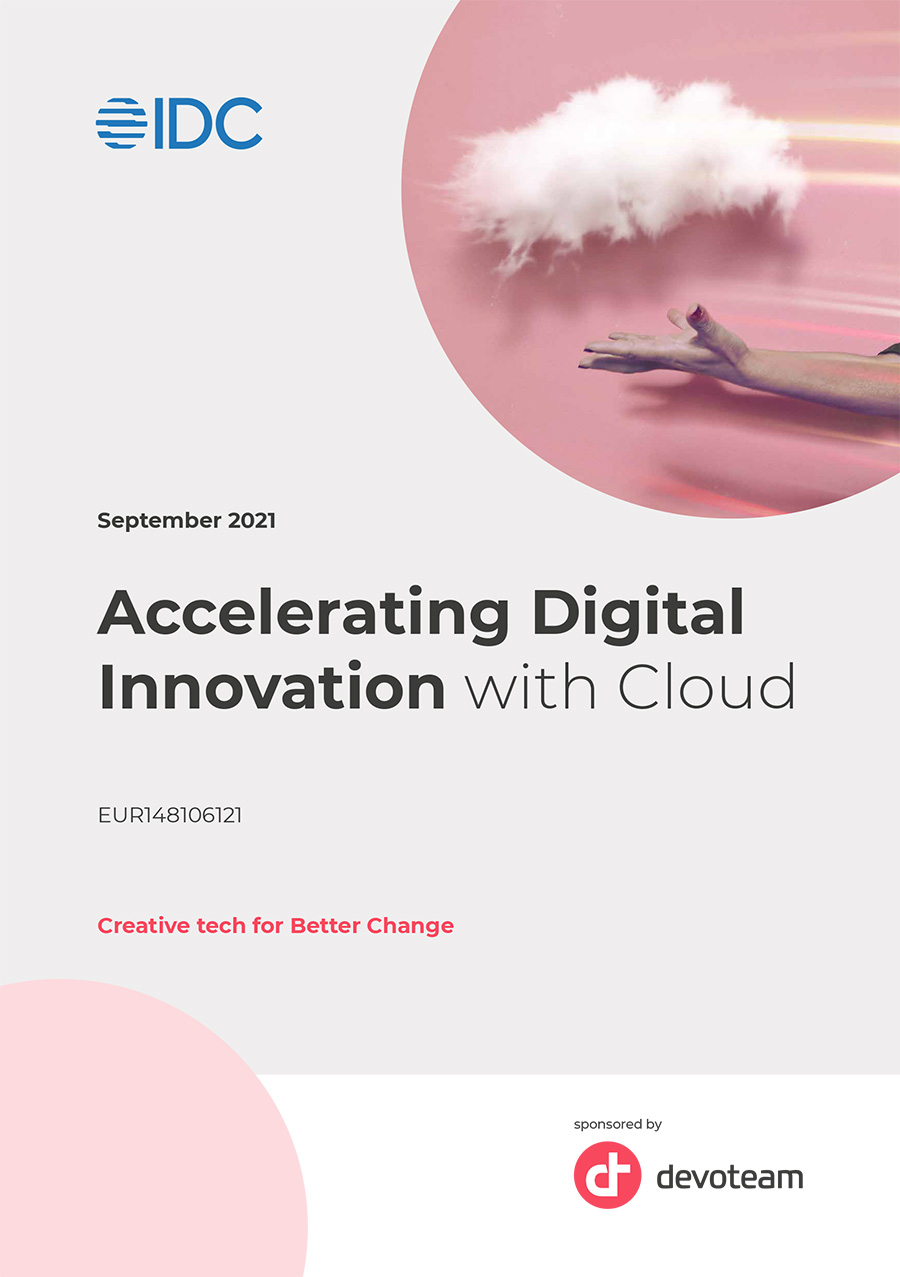Cloud adoption will accelerate at a staggering pace in the next two years, and the most advanced organizations today will outperform their competitors significantly both through their advanced use of cloud and their ability to drive digital innovation and real business benefits from their usage of cloud.
EMEA organizations can benefit from the best practices pioneered by their innovator peers and from the usage of external partners who codify these best practices into repeatable service offerings that can help organizations to accelerate their own cloud journeys.
While the complexity and cost of cloud migrations can be overwhelming at times, security and digital trust are the foundation for a successful cloud implementation.
Sustainability has emerged as a key differentiator between the leading organizations and their peers, and EMEA organizations are advised to formulate their own sustainability goals and processes.
For organizations wanting to accelerate cloud-based digital innovation, IDC recommends the following:
- Assess where your strengths and weaknesses are when it comes to using cloud for digital innovation and determine your next step to take you forward.
- Be inspired by and learn from EMEA organizations that have taken the journey before you and learn from their experiences and best practices.
- Find an external partner that can help you fill some of the capability gaps and provide guidance along the way.
Appendix
Defining Key Cloud Terms
Public cloud services are shared among unrelated enterprises and/or consumers, open to a largely unrestricted universe of potential users, and designed for a market, not a single enterprise.
Private cloud services are shared within a single enterprise or an extended enterprise, with restrictions on access and level of resource dedication, and defined/controlled by the enterprise, beyond the control available in public cloud offerings.
Hybrid cloud: IDC defines hybrid cloud as the usage of IT services (including IaaS, PaaS, SaaS apps, and SaaS-SIS cloud services) across one or more deployment models using a unified framework. Hybrid cloud services include “public-public,” “publicprivate,” and “private-private” combinations. Cloud and non-cloud combinations (sometimes referred to hybrid IT) where the noncloud applications are front ended with cloud services interfaces (e.g., RESTful APIs) are also included. Examples include:
- A customer using a public cloud IaaS service while also consuming the same IaaS portfolio on a dedicated local cloudas-a-service (LCaaS) platform in the customer’s datacenter or edge location.
- A customer using a hosted private cloud system while also consuming a dedicated LCaaS platform in the customer’s datacenter.
- A customer using a common cloud automation/operating environment (open or proprietary) across more than one public cloud and/or on an LCaaS, a hosted private cloud, or an enterprise private cloud.
Multicloud: The term multicloud is sometimes used in the industry as an alternative to hybrid cloud. However, for IDC, multicloud is a description of an organizational strategy or the architectural approach to the design of a complex digital service that involves the consumption of cloud services from more than one cloud service provider. These may be directly competing cloud services such as hosted private cloud versus public cloud compute services, public object storage from more than one public cloud service provider, or IaaS and SaaS from one or more cloud service providers. In both contexts, multicloud encompasses a much larger universe than hybrid cloud and is only gated by the cost/complexity associated with enabling consistent management/governance of many different cloud options.
Multicloud is also a growing focus when it comes to management products/services that allow an enterprise to effectively administer/ govern (configure, secure, cost control) its expanding portfolio of different cloud-based infrastructure, data sets, and applications from multiple cloud service providers.
Since the start of the cloud era, multicloud management has been offered as a multicloud services contract by managed service providers. Today, multicloud management also includes a growing portfolio of packaged and SaaS-delivered multicloud management software solutions that automate or replace some managed services elements.
The adoption of open standards to enable use of a multicloud architecture for complex applications or for defining and monitoring cloud resource and data streams can make it easier to extend the value of multicloud architectures and management, but they are not a prerequisite at this time.
Survey Demographics
IDC conducted a survey of 700 IT and business decision makers from across EMEA. The survey demographics are:
- 100 respondents in each of these countries/regions: France, Germany, UK, Benelux, Nordics, Iberia, and Middle East
- A mixed sample of organizations with more than 500 employees: 18% 500-999 FTE, 22% 1000 – 2499 FTE, 15% 2500-4999 FTE, 16% 5000 – 9999 FTE, and 27% 10000 FTE plus
- A balanced approach across verticals with a focus on financial services organizations
- 80% IT and 20% LoB decision makers
- 55% of respondent organizations adopted cloud more than two years ago, 45% adopted cloud in the past two years
- 48% of respondents used AWS, 58% of respondents used Microsoft Azure, 48% used Google Cloud Platform (GCP)
Cloud Benchmark Assessment methodology
Based on 9 questions from the survey, respondents were grouped into three capability levels across three pillars. The three pillars are:
- Plan & Architect
- Build, Security & Optimize
- Innovate and differentiate
The three capability levels are:
- Cloud experimenter
- Cloud optimizer
- Cloud innovator

Message from the sponsor
For Devoteam, Cloud opens the door to a field of unparalleled possibilities.
Cloud has reached a pivotal moment in its development. After a time of experimentation, followed by active but disjointed use, companies are now looking to maximize the benefits and make it their platform for transforming into a “digital company”.
Most large companies today use multiple Cloud providers, very often combined with on-premises systems. The challenge is maintaining this diversity, guaranteeing independence, innovation, and optimal levels of service — while also maintaining control and ensuring security, compliance, service quality, and manageable costs.
Devoteam offers a full range of Cloud services, enabling businesses to speed up their innovation processes, boost their agility, improve their operational efficiency, and optimize their costs.
Gert Jan van Halem,
Distributed Cloud Director, Devoteam
About the Authors

Carla Arend is a senior program director with the European software and infrastructure research team and heads up IDC’s European cloud research. Arend provides industry clients with key insight into market dynamics, vendor activities, and end-user adoption trends in the European cloud market. As part of her research, she covers topics such as how European organizations are adopting cloud, how cloud drivers and inhibitors are evolving, cloud management, cloud security, data management in the cloud, IoT and cloud, AI and cloud, DevOps and cloud, as well as GDPR impact on cloud and cloud code of conduct.
In addition to syndicated research, Arend has worked on many custom consulting projects identifying opportunities in the European cloud market and has authored white papers on subjects such as cloud management, cloud security, data management in the cloud.

Archana Venkatraman is a research manager for IDC’s European Datacenter Research. She covers datacenter technologies including software-defined infrastructures, storage and data management, virtualization, containers, hyperconverged infrastructure, infrastructure performance monitoring, systems management, application development, and cloud services.
Archana also leads IDC’s European thought leadership program on open-source technologies. She also contributes to European Digital Transformation, DevOps, Blockchain and IoT research practices.
